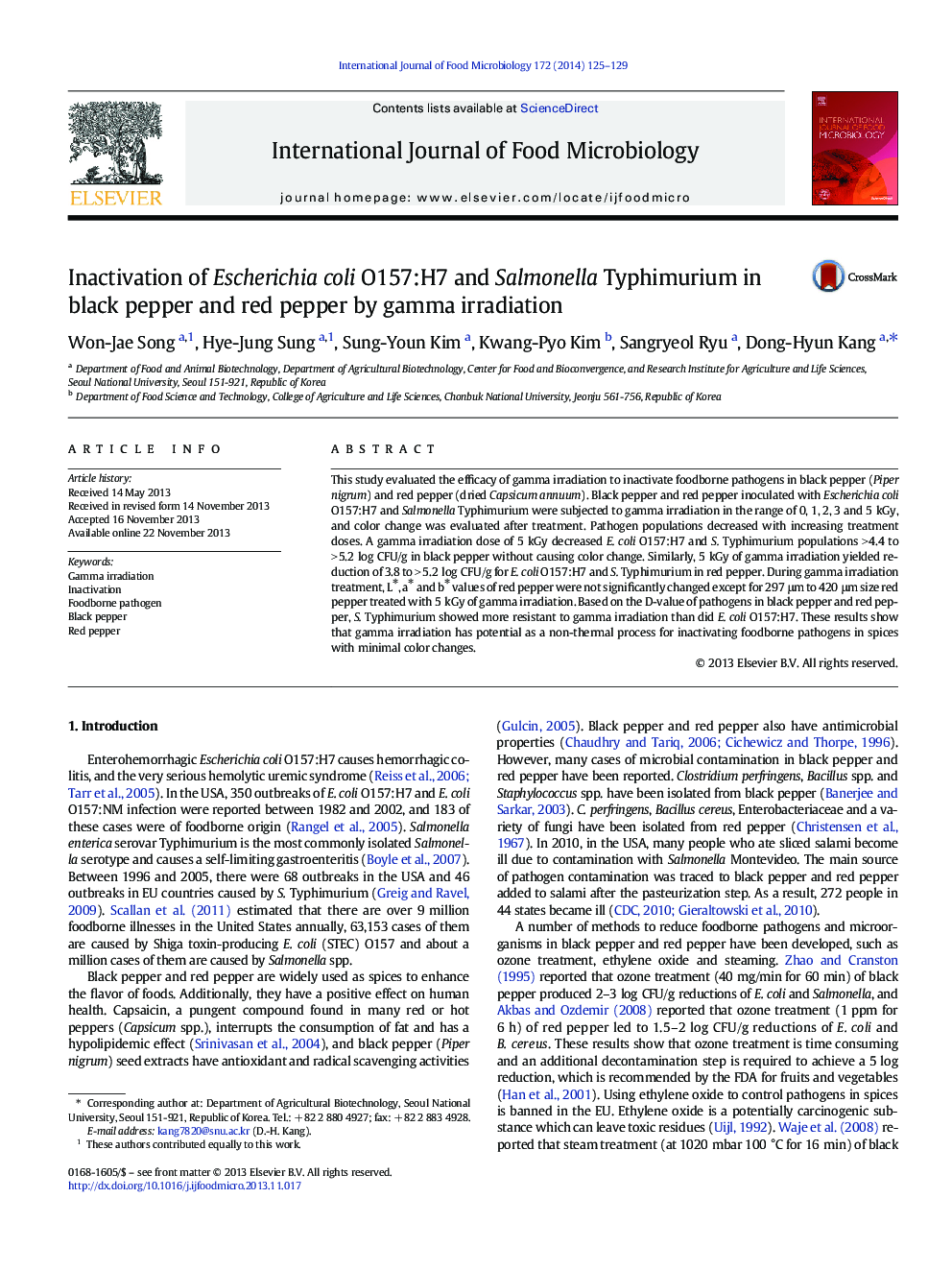| Article ID | Journal | Published Year | Pages | File Type |
|---|---|---|---|---|
| 6290125 | International Journal of Food Microbiology | 2014 | 5 Pages |
â¢Black pepper and red pepper inoculated with E. coli O157:H7, and S. Typhimurium were treated with gamma irradiation.â¢Five kilogray treatments resulted in > 4.4 to > 5.2 log CFU/g reductions of E. coli O157:H7 and S. Typhimurium in black pepper.â¢Five kilogray treatments produced 3.8 to > 5.2 log CFU/g reductions of E. coli O157:H7 and S. Typhimurium in red pepper.â¢Since no color changes were observed, 5 kGy treatment is useful for pathogen reduction of pepper.
This study evaluated the efficacy of gamma irradiation to inactivate foodborne pathogens in black pepper (Piper nigrum) and red pepper (dried Capsicum annuum). Black pepper and red pepper inoculated with Escherichia coli O157:H7 and Salmonella Typhimurium were subjected to gamma irradiation in the range of 0, 1, 2, 3 and 5 kGy, and color change was evaluated after treatment. Pathogen populations decreased with increasing treatment doses. A gamma irradiation dose of 5 kGy decreased E. coli O157:H7 and S. Typhimurium populations > 4.4 to > 5.2 log CFU/g in black pepper without causing color change. Similarly, 5 kGy of gamma irradiation yielded reduction of 3.8 to > 5.2 log CFU/g for E. coli O157:H7 and S. Typhimurium in red pepper. During gamma irradiation treatment, Lâ, aâ and bâ values of red pepper were not significantly changed except for 297 μm to 420 μm size red pepper treated with 5 kGy of gamma irradiation. Based on the D-value of pathogens in black pepper and red pepper, S. Typhimurium showed more resistant to gamma irradiation than did E. coli O157:H7. These results show that gamma irradiation has potential as a non-thermal process for inactivating foodborne pathogens in spices with minimal color changes.
